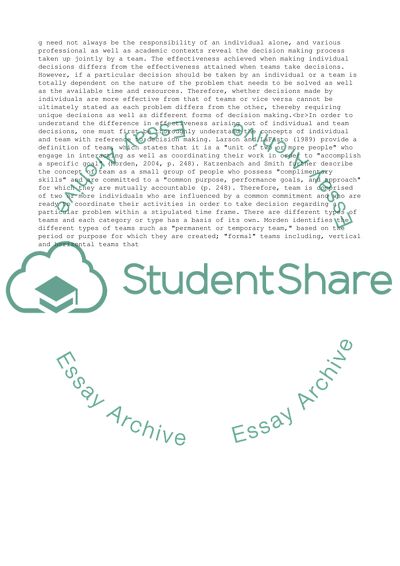Cite this document
(“Challenges, problems and conflicts that may occur in teams (Teamwork Essay”, n.d.)
Challenges, problems and conflicts that may occur in teams (Teamwork Essay. Retrieved from https://studentshare.org/management/1648498-challenges-problems-and-conflicts-that-may-occur-in-teams-teamwork-vs-individual-work-in-efficiency-of-decision-making
Challenges, problems and conflicts that may occur in teams (Teamwork Essay. Retrieved from https://studentshare.org/management/1648498-challenges-problems-and-conflicts-that-may-occur-in-teams-teamwork-vs-individual-work-in-efficiency-of-decision-making
(Challenges, Problems and Conflicts That May Occur in Teams (Teamwork Essay)
Challenges, Problems and Conflicts That May Occur in Teams (Teamwork Essay. https://studentshare.org/management/1648498-challenges-problems-and-conflicts-that-may-occur-in-teams-teamwork-vs-individual-work-in-efficiency-of-decision-making.
Challenges, Problems and Conflicts That May Occur in Teams (Teamwork Essay. https://studentshare.org/management/1648498-challenges-problems-and-conflicts-that-may-occur-in-teams-teamwork-vs-individual-work-in-efficiency-of-decision-making.
“Challenges, Problems and Conflicts That May Occur in Teams (Teamwork Essay”, n.d. https://studentshare.org/management/1648498-challenges-problems-and-conflicts-that-may-occur-in-teams-teamwork-vs-individual-work-in-efficiency-of-decision-making.


